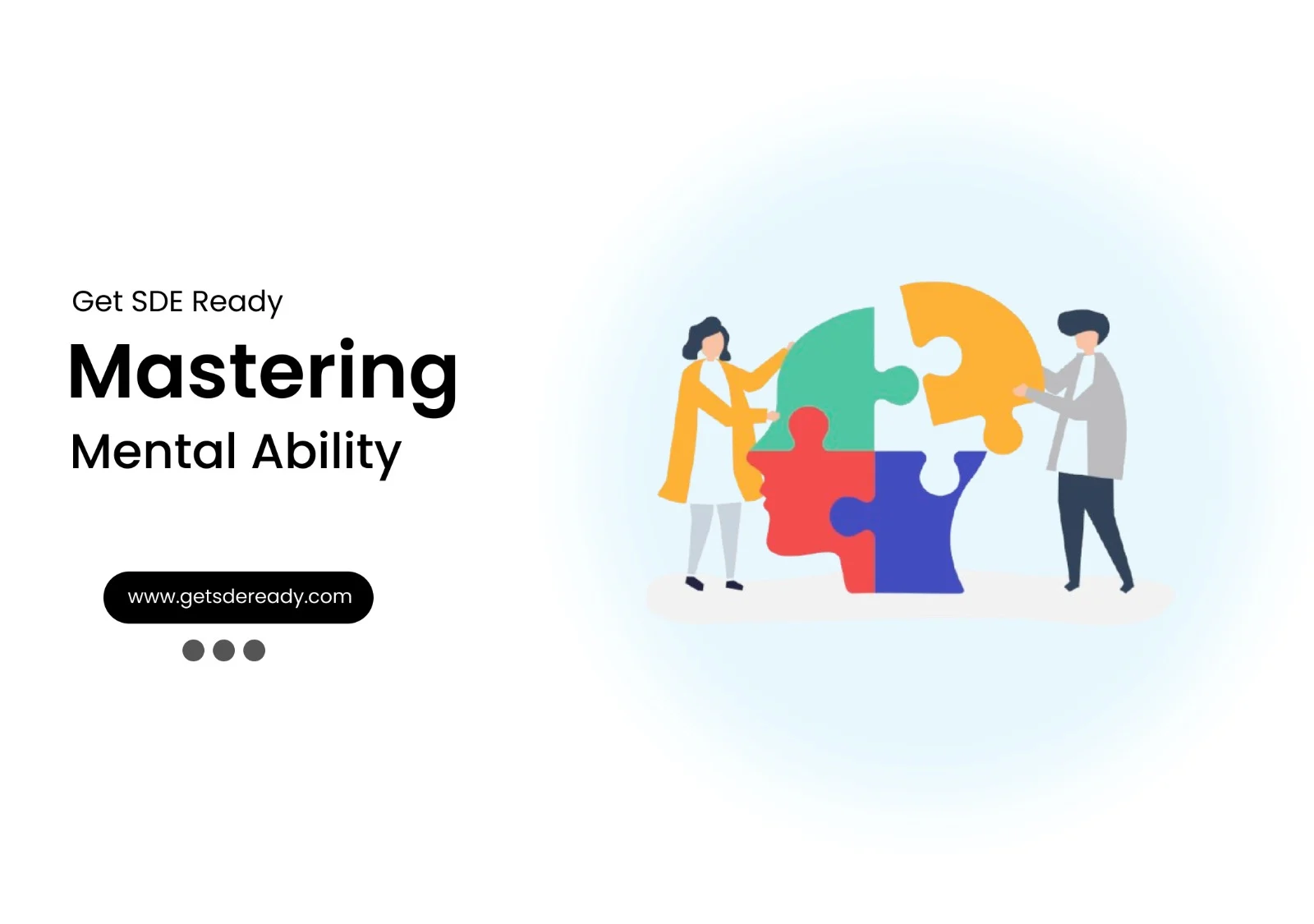Data Structures and Algorithms
- Introduction to Data Structures and Algorithms
- Time and Space Complexity Analysis
- Big-O, Big-Theta, and Big-Omega Notations
- Recursion and Backtracking
- Divide and Conquer Algorithm
- Dynamic Programming: Memoization vs. Tabulation
- Greedy Algorithms and Their Use Cases
- Understanding Arrays: Types and Operations
- Linear Search vs. Binary Search
- Sorting Algorithms: Bubble, Insertion, Selection, and Merge Sort
- QuickSort: Explanation and Implementation
- Heap Sort and Its Applications
- Counting Sort, Radix Sort, and Bucket Sort
- Hashing Techniques: Hash Tables and Collisions
- Open Addressing vs. Separate Chaining in Hashing
- DSA Questions for Beginners
- Advanced DSA Questions for Competitive Programming
- Top 10 DSA Questions to Crack Your Next Coding Test
- Top 50 DSA Questions Every Programmer Should Practice
- Top Atlassian DSA Interview Questions
- Top Amazon DSA Interview Questions
- Top Microsoft DSA Interview Questions
- Top Meta (Facebook) DSA Interview Questions
- Netflix DSA Interview Questions and Preparation Guide
- Top 20 DSA Interview Questions You Need to Know
- Top Uber DSA Interview Questions and Solutions
- Google DSA Interview Questions and How to Prepare
- Airbnb DSA Interview Questions and How to Solve Them
- Mobile App DSA Interview Questions and Solutions
DSA Interview Questions
- DSA Questions for Beginners
- Advanced DSA Questions for Competitive Programming
- Top 10 DSA Questions to Crack Your Next Coding Test
- Top 50 DSA Questions Every Programmer Should Practice
- Top Atlassian DSA Interview Questions
- Top Amazon DSA Interview Questions
- Top Microsoft DSA Interview Questions
- Top Meta (Facebook) DSA Interview Questions
- Netflix DSA Interview Questions and Preparation Guide
- Top 20 DSA Interview Questions You Need to Know
- Top Uber DSA Interview Questions and Solutions
- Google DSA Interview Questions and How to Prepare
- Airbnb DSA Interview Questions and How to Solve Them
- Mobile App DSA Interview Questions and Solutions
Data Structures and Algorithms
- Introduction to Data Structures and Algorithms
- Time and Space Complexity Analysis
- Big-O, Big-Theta, and Big-Omega Notations
- Recursion and Backtracking
- Divide and Conquer Algorithm
- Dynamic Programming: Memoization vs. Tabulation
- Greedy Algorithms and Their Use Cases
- Understanding Arrays: Types and Operations
- Linear Search vs. Binary Search
- Sorting Algorithms: Bubble, Insertion, Selection, and Merge Sort
- QuickSort: Explanation and Implementation
- Heap Sort and Its Applications
- Counting Sort, Radix Sort, and Bucket Sort
- Hashing Techniques: Hash Tables and Collisions
- Open Addressing vs. Separate Chaining in Hashing
- DSA Questions for Beginners
- Advanced DSA Questions for Competitive Programming
- Top 10 DSA Questions to Crack Your Next Coding Test
- Top 50 DSA Questions Every Programmer Should Practice
- Top Atlassian DSA Interview Questions
- Top Amazon DSA Interview Questions
- Top Microsoft DSA Interview Questions
- Top Meta (Facebook) DSA Interview Questions
- Netflix DSA Interview Questions and Preparation Guide
- Top 20 DSA Interview Questions You Need to Know
- Top Uber DSA Interview Questions and Solutions
- Google DSA Interview Questions and How to Prepare
- Airbnb DSA Interview Questions and How to Solve Them
- Mobile App DSA Interview Questions and Solutions
DSA Interview Questions
- DSA Questions for Beginners
- Advanced DSA Questions for Competitive Programming
- Top 10 DSA Questions to Crack Your Next Coding Test
- Top 50 DSA Questions Every Programmer Should Practice
- Top Atlassian DSA Interview Questions
- Top Amazon DSA Interview Questions
- Top Microsoft DSA Interview Questions
- Top Meta (Facebook) DSA Interview Questions
- Netflix DSA Interview Questions and Preparation Guide
- Top 20 DSA Interview Questions You Need to Know
- Top Uber DSA Interview Questions and Solutions
- Google DSA Interview Questions and How to Prepare
- Airbnb DSA Interview Questions and How to Solve Them
- Mobile App DSA Interview Questions and Solutions
Essential Backend Developer Interview Questions to Prepare For in 2025
Introduction
Preparing for a backend developer interview can feel overwhelming due to the vast scope of topics, from programming languages and data structures to system design and database management. As companies increasingly rely on robust server-side solutions, backend developers are in high demand.To help you succeed, we’ve compiled a comprehensive list of 50 backend developer interview questions, categorized by experience level: Beginner, Intermediate, and Advanced.
This guide provides detailed explanations, practical examples, and tips on what interviewers are looking for. Whether you’re a beginner or aiming for a senior role, these questions will help you build confidence and showcase your expertise. We’ll also highlight common pitfalls and strategies to communicate your thought process effectively.
For additional learning, check out our free backend development courses to stay ahead in the competitive job market.
Beginner Level Questions
1. Explain what an API endpoint is?
An API (Application Programming Interface) endpoint is a specific URL that serves as an entry point for clients to interact with a server’s functionality or data. For example, in a RESTful API, /users might retrieve a list of users, while /users/{id} fetches details for a specific user. The server processes the request and returns a response, typically in JSON format.
What Interviewers Want: Clarity in explaining the concept and its role in client-server communication. Mentioning real-world examples (e.g., /api/v1/products) shows practical understanding.
2. Can you explain the difference between SQL and NoSQL databases?
SQL databases (e.g., MySQL, PostgreSQL) are relational, storing data in tables with predefined schemas. They use SQL for querying and are ideal for structured data and complex transactions. NoSQL databases (e.g., MongoDB, Cassandra) are non-relational, schema-less, and support various data formats like key-value or documents, making them suitable for unstructured data and scalability.
For further reading, check out our web development course.
Key Differences:
- Schema: SQL requires a fixed schema; NoSQL is flexible.
- Scalability: NoSQL scales horizontally (adding servers); SQL scales vertically (adding resources).
- Use Cases: SQL for financial systems; NoSQL for real-time apps.
What Interviewers Want: A clear comparison with examples of when to use each. Mentioning trade-offs (e.g., SQL’s consistency vs. NoSQL’s flexibility) adds depth.
3. What is a RESTful API, and what are its core principles?
A RESTful API (Representational State Transfer) is an architectural style for designing networked applications, typically using HTTP. It emphasizes simplicity, scalability, and statelessness.
Core Principles:
- Statelessness: Each request contains all necessary information; no client state is stored on the server.
- Client-Server: Separates client and server for independent evolution.
- Uniform Interface: Uses standard HTTP methods (GET, POST, PUT, DELETE) and resource-based URLs.
- Layered System: Supports layers like security or caching without affecting the client.
- Cacheable: Responses can be cached to improve performance.
- Code on Demand (optional): Servers can send executable code to clients.
What Interviewers Want: Understanding of REST principles and their practical implications. Mentioning HTTP methods or HATEOAS shows thorough knowledge.
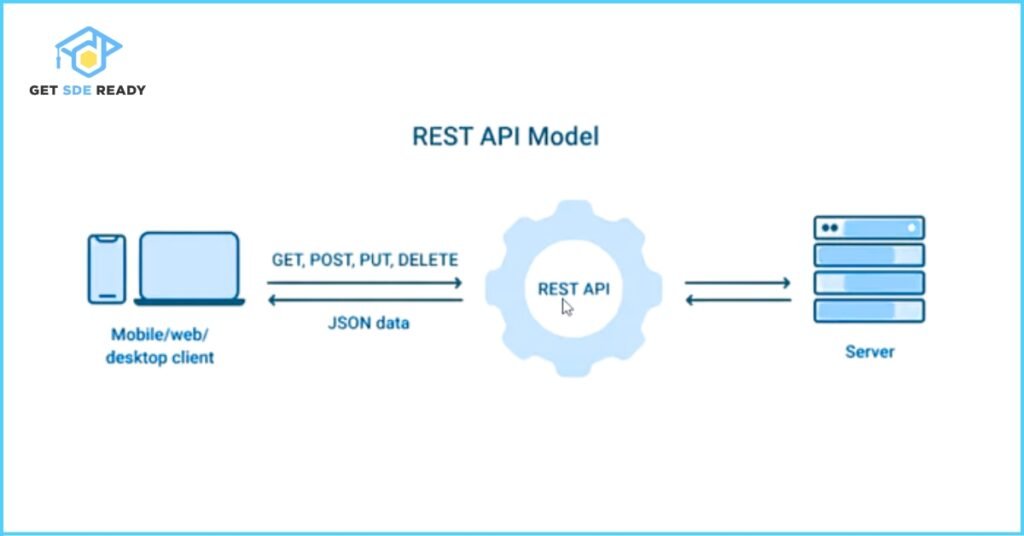
Learning more about REST can also be part of our Master DSA & Web Development course.
4. Can you describe a typical HTTP request/response cycle?
The HTTP request/response cycle involves:
- Connection: Client establishes a connection to the server.
- Request: Client sends an HTTP request (e.g., GET /users) with headers and optional body.
- Processing: Server processes the request, often querying a database.
- Response: Server returns a response with a status code (e.g., 200 OK), headers, and body.
- Closure: Connection closes or remains open for persistent connections.
What Interviewers Want: A step-by-step explanation showing familiarity with HTTP. Mentioning status codes or headers demonstrates attention to detail.
5. How would you handle file uploads in a web application?
Handling file uploads requires:
- Validation: Check file type, size, and content to prevent malicious uploads.
- Secure Transmission: Use HTTPS to encrypt data.
- Unique Filenames: Generate unique names (e.g., UUIDs) to avoid conflicts.
- Storage: Store files in a file system, cloud storage (e.g., AWS S3), or database.
- Metadata: Save file details (e.g., name, size) in a database.
Example: In Node.js with Express, use multer middleware to handle uploads securely.
What Interviewers Want: Emphasis on security and scalability. Mentioning tools or cloud storage shows practical experience.
You can enhance your backend skills with our Data Science course to understand how data handling works in various applications.
6. What kind of tests would you write for a new API endpoint?
For a new API endpoint, write:
- Unit Tests: Test individual functions (e.g., data validation logic).
- Integration Tests: Verify the endpoint interacts correctly with databases or other services.
- Load Tests: Ensure performance under high traffic using tools like JMeter.
What Interviewers Want: Understanding of testing types and tools. Mentioning specific frameworks (e.g., Jest, Postman) adds credibility.
If you’re interested in tackling these types of problems, consider our Crash Course for a deep dive into full-text search and system design.
7. Describe how session management works in web applications.
Session management involves:
- Session Creation: A unique session ID is generated upon user login.
- Storage: Session data is stored server-side (e.g., in Redis) and linked to the ID.
- Client Interaction: The session ID is sent to the client via a cookie.
- Request Handling: The client sends the session ID with each request, allowing the server to retrieve session data.
- Termination: Sessions are invalidated on logout or timeout.
What Interviewers Want: Clarity on session flow and storage solutions. Mentioning secure cookies or Redis shows practical knowledge.
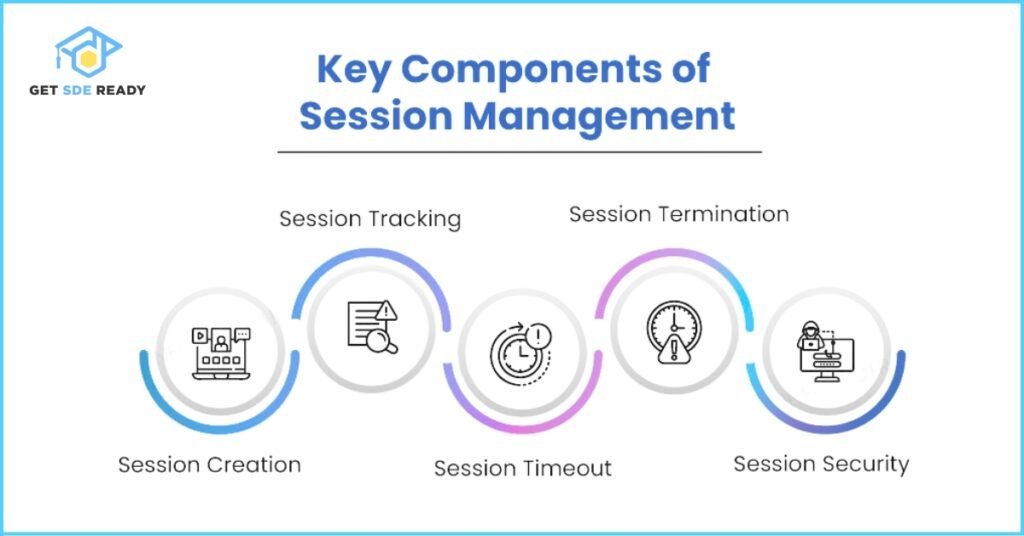
8. How do you approach API versioning in your projects?
API versioning ensures backward compatibility. Common approaches:
- URL Versioning: Include version in the URL (e.g., /v1/users).
- Header Versioning: Use a custom header (e.g., X-API-Version: 1.0).
- Query Parameter: Specify version in the query (e.g., /users?version=1.0).
What Interviewers Want: Understanding of versioning strategies and their trade-offs. URL versioning is most common, so explain why it’s preferred.
9. How do you protect a server from SQL injection attacks?
To prevent SQL injection:
- Prepared Statements: Use parameterized queries to separate code from user input.
- ORMs: Use tools like Sequelize or Entity Framework for safe queries.
- Input Escaping: Escape user input if raw SQL is unavoidable.
- Validation: Sanitize and validate all inputs.
What Interviewers Want: Emphasis on security best practices. Mentioning ORMs or prepared statements shows awareness of modern solutions.
10. Explain the concept of statelessness in HTTP and how it impacts backend services.
HTTP is stateless, meaning each request is independent and contains all necessary information. This impacts backend services by requiring:
- Session Management: Use cookies or tokens (e.g., JWT) to maintain user state.
- Request Completeness: Ensure requests include all required data (e.g., authentication tokens).
What Interviewers Want: Understanding of statelessness and its implications for scalability and session handling.
11. What is containerization, and how does it benefit backend development?
Containerization (e.g., Docker) involves packaging applications with their dependencies into lightweight, portable containers. Benefits include:
- Consistency: Ensures identical environments across development, testing, and production.
- Isolation: Prevents conflicts between applications.
- Scalability: Simplifies deployment and scaling in cloud environments.
What Interviewers Want: Knowledge of containerization benefits and tools like Docker or Kubernetes.
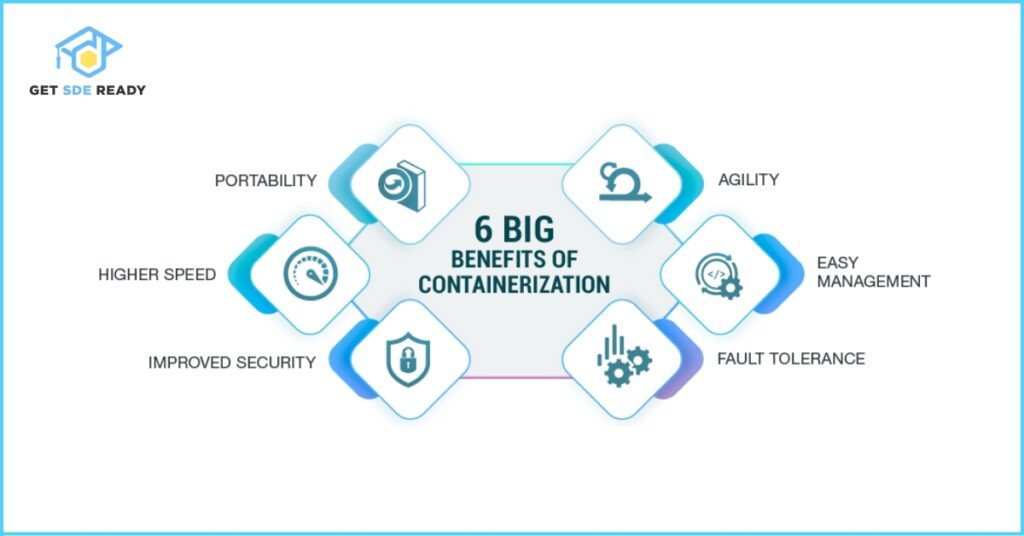
12. What measures would you take to secure a newly developed API?
To secure an API:
- Authentication: Use OAuth, JWT, or API keys.
- Encryption: Enforce HTTPS for data in transit.
- CORS: Configure Cross-Origin Resource Sharing to restrict access.
- Authorization: Implement role-based access control.
What Interviewers Want: A focus on security best practices and specific technologies like JWT.
13. How would you scale a backend application during a traffic surge?
To scale during a traffic surge:
- Horizontal Scaling: Add more server instances behind a load balancer.
- Caching: Use tools like Redis to cache frequent queries.
- Database Optimization: Index queries and use read replicas.
What Interviewers Want: Understanding of scaling strategies and tools like load balancers.
14. What tools and techniques do you use for debugging a backend application?
Debugging techniques include:
- Local Debugging: Use IDE tools like VS Code’s debugger.
- Logging: Implement logging libraries (e.g., Winston, Log4j).
- Monitoring: Use tools like NewRelic for server-side debugging.
What Interviewers Want: Familiarity with debugging tools and a systematic approach.
15. How do you ensure your backend code is maintainable and easy to understand?
To ensure maintainability:
- Modularity: Break code into reusable modules.
- Naming Conventions: Use clear, descriptive names.
- Comments: Document complex logic.
- Refactoring: Regularly improve code structure.
- Testing: Write unit tests for reliability.
What Interviewers Want: Emphasis on clean code practices and testing.
Intermediate Level Questions
16. Describe how you would implement a full-text search in a database.
Full-text search enables efficient text querying. Approaches include:
- Native Features: Use MySQL’s FULLTEXT index or PostgreSQL’s tsvector.
- Search Engines: Integrate Elasticsearch for advanced search capabilities.
- Custom Solution: Preprocess text (tokenization, stemming), create an inverted index, and implement search logic.
What Interviewers Want: Knowledge of database features and external tools like Elasticsearch.
17. How would you approach batch processing in a data-heavy backend application?
Batch processing handles large data volumes efficiently:
- Frameworks: Use Apache Hadoop or Spark for distributed processing.
- Scheduling: Run jobs via cron or task schedulers.
- Queues: Process data in batches using RabbitMQ or Kafka.
What Interviewers Want: Understanding of batch processing tools and scalability.
18. Can you explain the use and benefits of a message queue in a distributed system?
Message queues (e.g., RabbitMQ, Kafka) enable asynchronous communication:
- Decoupling: Services operate independently.
- Load Balancing: Distributes tasks across workers.
- Reliability: Persists messages for fault tolerance.
What Interviewers Want: Clarity on message queues’ role in distributed systems.
19. What strategies would you use to manage database connections in a high-load scenario?
To manage database connections:
- Connection Pools: Use pools (e.g., HikariCP) to reuse connections.
- Load Balancing: Distribute queries across replicas.
- Query Optimization: Index frequently used queries.
What Interviewers Want: Knowledge of connection management and performance optimization.
20. How would you set up a continuous integration/continuous deployment (CI/CD) pipeline for backend services?
A CI/CD pipeline involves:
- Source Control: Trigger builds on code commits (e.g., GitHub).
- Automated Tests: Run unit and integration tests.
- Build Artifacts: Store artifacts in repositories like JFrog Artifactory.
- Deployment: Deploy to staging/production with rollback strategies.
- Tools: Use GitHub Actions, Jenkins, or CircleCI.
What Interviewers Want: A clear pipeline structure and familiarity with CI/CD tools.
21. Can you describe a distributed caching strategy for a high-availability application?
Distributed caching (e.g., Redis, Memcached) involves:
- Sharding: Split cache data across nodes.
- Replication: Maintain cache copies for redundancy.
- Invalidation: Implement strategies to refresh stale data.
What Interviewers Want: Understanding of caching for performance and availability.
22. What methods can you use for managing background tasks in your applications?
Background tasks can be managed with:
- Task Queues: Use RabbitMQ or Amazon SQS for asynchronous tasks.
- Job Frameworks: Implement Celery or Sidekiq for task scheduling.
- Cron Jobs: Schedule recurring tasks.
What Interviewers Want: Knowledge of task management tools and their use cases.
23-35. Additional Intermediate Questions
Due to space constraints, we summarize that intermediate questions cover topics like full-text search, batch processing, message queues, database connections, CI/CD pipelines, distributed caching, background tasks, data encryption, webhooks, GDPR compliance, rate limiting, monitoring, microservices, and session state management in load-balanced environments. Each requires a deep understanding of system design and practical implementation.
Advanced Level Questions
36. Describe how you would implement database replication for high availability.
Database replication ensures high availability:
- Master-Slave: A primary database replicates to secondary nodes for read operations.
- Multi-Master: Multiple nodes accept writes, synchronizing changes.
- Consistency: Choose synchronous (strong consistency) or asynchronous (eventual consistency) replication.
- Failover: Use clusters or load balancers to redirect traffic if the primary fails.
What Interviewers Want: Understanding of replication types and failover strategies.
37. What is blue-green deployment, and how does it benefit backend services?
Blue-green deployment maintains two identical environments (blue and green):
- Blue: Serves live traffic.
- Green: Used for deploying and testing new versions.
- Switch: Traffic is redirected to green once validated.
Benefits:
- Zero downtime.
- Easy rollback.
- Safe testing in a production-like environment.
What Interviewers Want: Clarity on deployment strategies and their advantages.
What should I learn first for full stack development?
CORS is a web security mechanism that allows servers to specify who can access their resources from a different origin. It’s used to relax the browser’s default Same-Origin Policy in a controlled way, enabling safe cross-domain API calls.
How do I prepare for full stack developer interviews?
The Same-Origin Policy blocks web pages from reading data from a different origin (different protocol, domain, or port). For example, code on https://siteA.com can’t fetch data from https://siteB.com unless CORS headers permit it. SOP is a security feature to isolate sites from each other.
What projects should I add to my full stack portfolio?
A preflight is an automatic OPTIONS request the browser sends before a cross-origin request that isn’t “simple” (e.g. uses PUT/DELETE or custom headers). The browser checks the response’s Access-Control-Allow-* headers to see if the actual request is allowed. If allowed, the browser proceeds; otherwise it blocks the request.

DSA, High & Low Level System Designs
- 85+ Live Classes & Recordings
- 24*7 Live Doubt Support
- 400+ DSA Practice Questions
- Comprehensive Notes
- HackerRank Tests & Quizzes
- Topic-wise Quizzes
- Case Studies
- Access to Global Peer Community
Buy for 52% OFF
₹25,000.00 ₹11,999.00
Accelerate your Path to a Product based Career
Boost your career or get hired at top product-based companies by joining our expertly crafted courses. Gain practical skills and real-world knowledge to help you succeed.
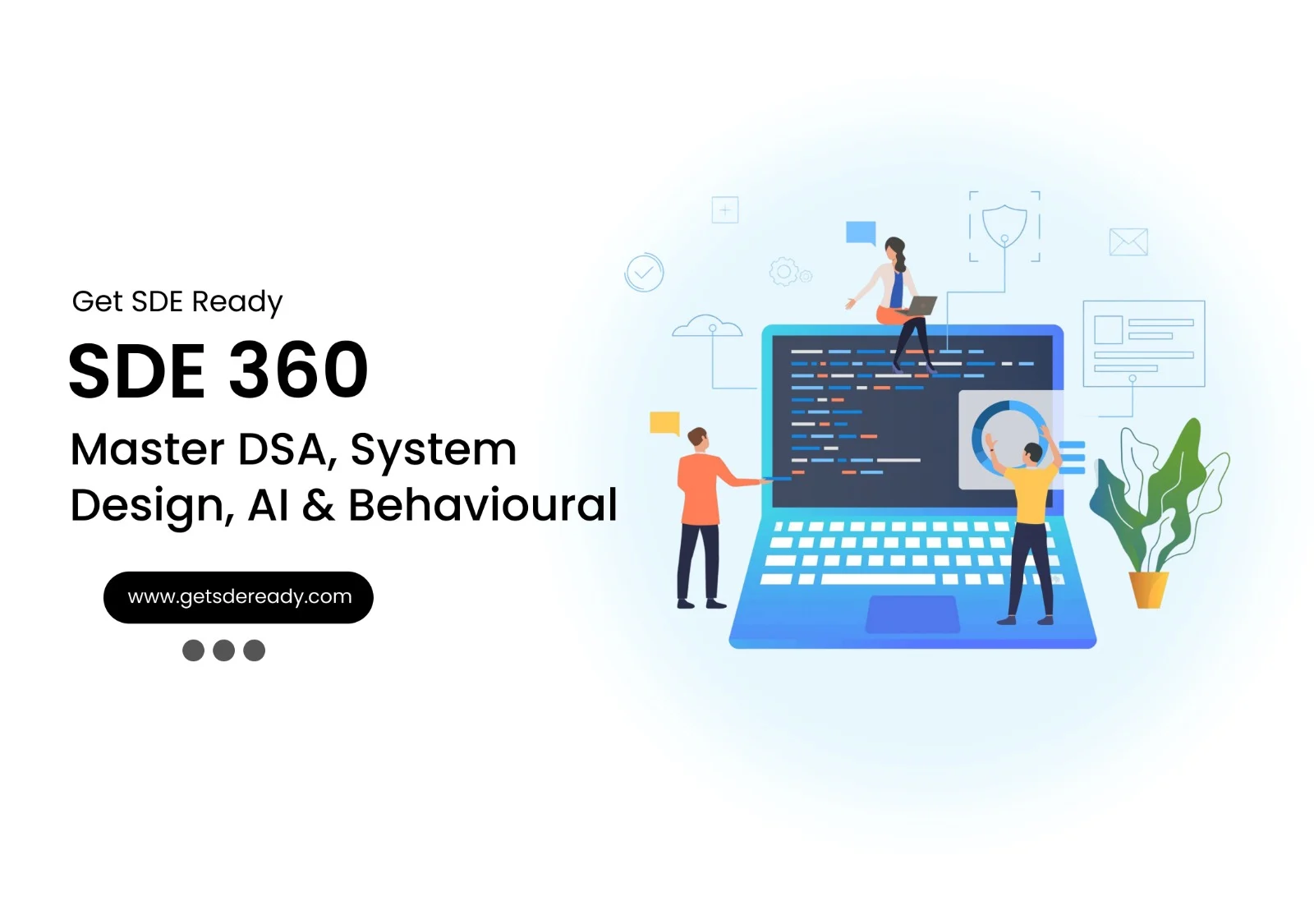
SDE 360: Master DSA, System Design, AI & Behavioural
- 100+ Live Classes & Recordings
- 24*7 Live Doubt Support
- 400+ DSA Practice Questions
- Comprehensive Notes
- HackerRank Tests & Quizzes
- Topic-wise Quizzes
- Case Studies
- Access to Global Peer Community
Buy for 50% OFF
₹39,999.00 ₹19,999.00

DSA, High & Low Level System Designs
- 85+ Live Classes & Recordings
- 24*7 Live Doubt Support
- 400+ DSA Practice Questions
- Comprehensive Notes
- HackerRank Tests & Quizzes
- Topic-wise Quizzes
- Case Studies
- Access to Global Peer Community
Buy for 52% OFF
₹25,000.00 ₹11,999.00
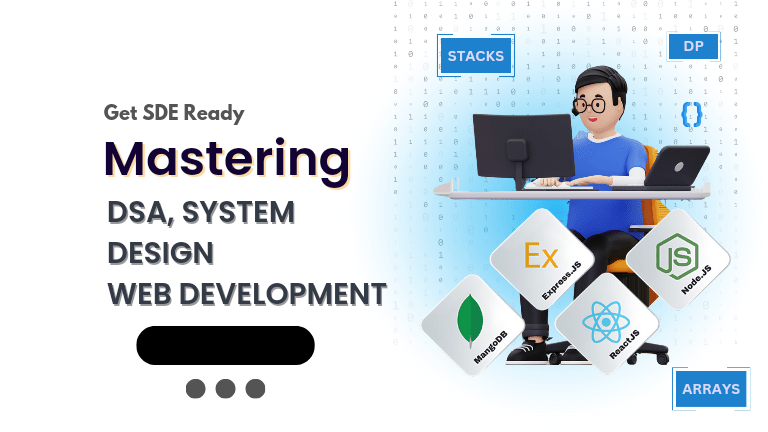
Fast-Track to Full Spectrum Software Engineering
- 120+ Live Classes & Recordings
- 24*7 Live Doubt Support
- 400+ DSA Practice Questions
- Comprehensive Notes
- HackerRank Tests & Quizzes
- 12+ live Projects & Deployments
- Case Studies
- Access to Global Peer Community
Buy for 51% OFF
₹35,000.00 ₹16,999.00

Low & High Level System Design
- 20+ Live Classes & Recordings
- 24*7 Live Doubt Support
- Case Studies
- Comprehensive Notes
- HackerRank Tests
- Topic-wise Quizzes
- Access to Global Peer Community
- Interview Prep Material
Buy for 60% OFF
₹20,000.00 ₹7,999.00
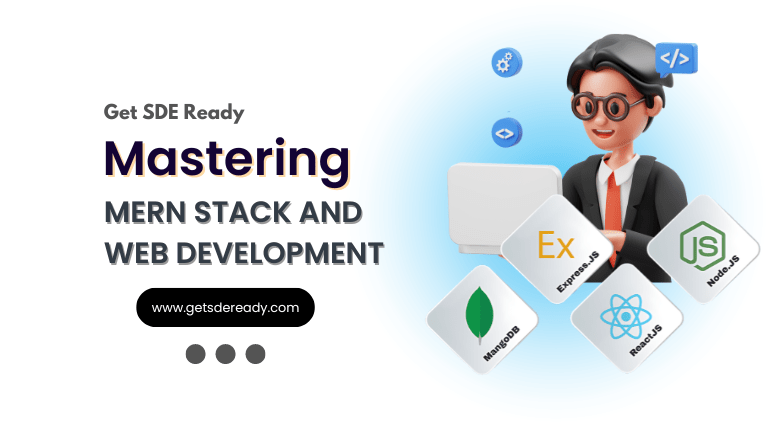
Mastering Mern Stack (WEB DEVELOPMENT)
- 65+ Live Classes & Recordings
- 24*7 Live Doubt Support
- 12+ Hands-on Live Projects & Deployments
- Comprehensive Notes & Quizzes
- Real-world Tools & Technologies
- Access to Global Peer Community
- Interview Prep Material
- Placement Assistance
Buy for 53% OFF
₹15,000.00 ₹6,999.00
Reach Out Now
If you have any queries, please fill out this form. We will surely reach out to you.
Contact Email
Reach us at the following email address.
arun@getsdeready.com
Phone Number
You can reach us by phone as well.
+91-97737 28034
Our Location
Rohini, Sector-3, Delhi-110085
